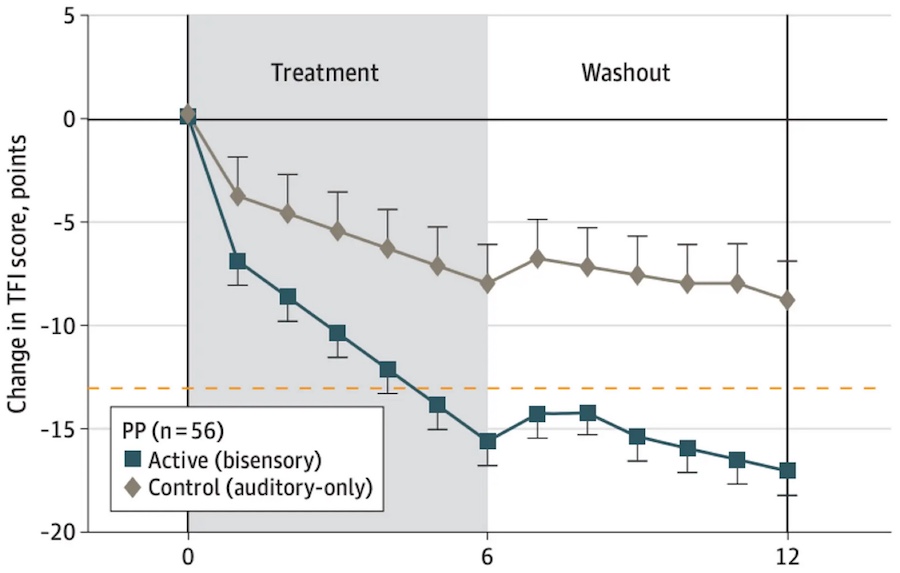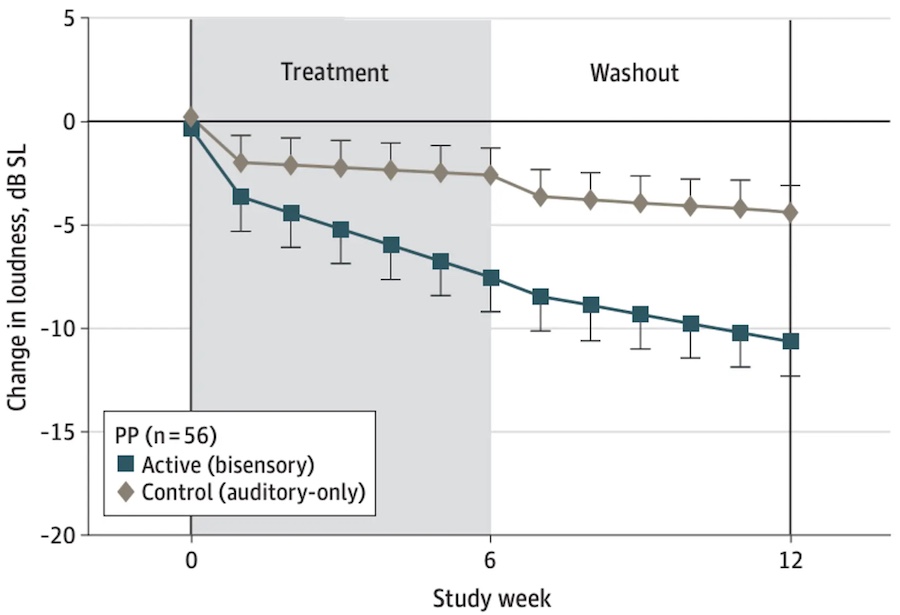Researchers at the University of Michigan have developed a bi-sensory treatment for tinnitus.
- The treatment combines precisely timed sound and touch stimulation to reduce the intensity of tinnitus.
- In a randomized clinical trial, participants used a portable, take-home device for 30 minutes daily.
- The treatment provided electrical pulses and low-volume sound designed to weaken the tinnitus circuits in the brain.
Most participants experienced lasting benefits, including significant improvements in quality of life, tinnitus handicap scores, and reductions in the loudness of their tinnitus.
Notable: More than 60% of participants reported substantial reductions in tinnitus after the six weeks of active treatment (sound and touch simulation) but not from the control treatment (auditory stimulation only).
- The study, a double-blind, randomized clinical trial, recruited 99 individuals with somatic tinnitus.
- With somatic tinnitus, movements like clenching the jaw or applying pressure to the forehead create a noticeable change in pitch or loudness of tinnitus.
- Nearly 70% of people with tinnitus have the somatic type.
Changes in overall Tinnitus Functional Index scores
 The typical patient experienced more than a 15-point drop in their Tinnitus Functional Index score, exceeding the 13-point threshold for a clinically significant improvement.
The typical patient experienced more than a 15-point drop in their Tinnitus Functional Index score, exceeding the 13-point threshold for a clinically significant improvement.
Why it matters
This study paves the way for the use of personalized, bi-sensory stimulation as an effective treatment for tinnitus, providing hope for millions of tinnitus sufferers. —Susan Shore, Ph.D., Professor Emerita in Michigan Medicine’s Department of Otolaryngology
A closer look
- Every participant used a portable device developed for in-home use. They used the device for 30 minutes daily for 36 weeks.
- Two electrodes placed on the back of the neck provided touch stimulation from tiny electrical impulses at the level participants could not detect.
- Researchers programmed the low-volume auditory stimulation to mimic the participants’ tinnitus.
- The timing of the sound pulses was designed to weaken tinnitus circuits in the dorsal cochlear nucleus of the brain.
- Study teams measured participants’ tinnitus weekly using the Tinnitus Functional Index (TFI) and the Tinnitus Handicap Inventory (THI), both questionnaires that measure the effect of tinnitus on people’s lives. Researchers also measured tinnitus loudness.
Changes in tinnitus loudness level
 After six weeks of treatment, patients continued improving without further treatment.
After six weeks of treatment, patients continued improving without further treatment.
Double blinding
- To facilitate blinding during the control treatment (sound only), participants were instructed to place the electrodes in the same position during the treatment and study phases. This effectively blinded participants and researchers to the treatment phase (control vs. active).
- Participants stated they could not tell whether they received the control or active treatment.

